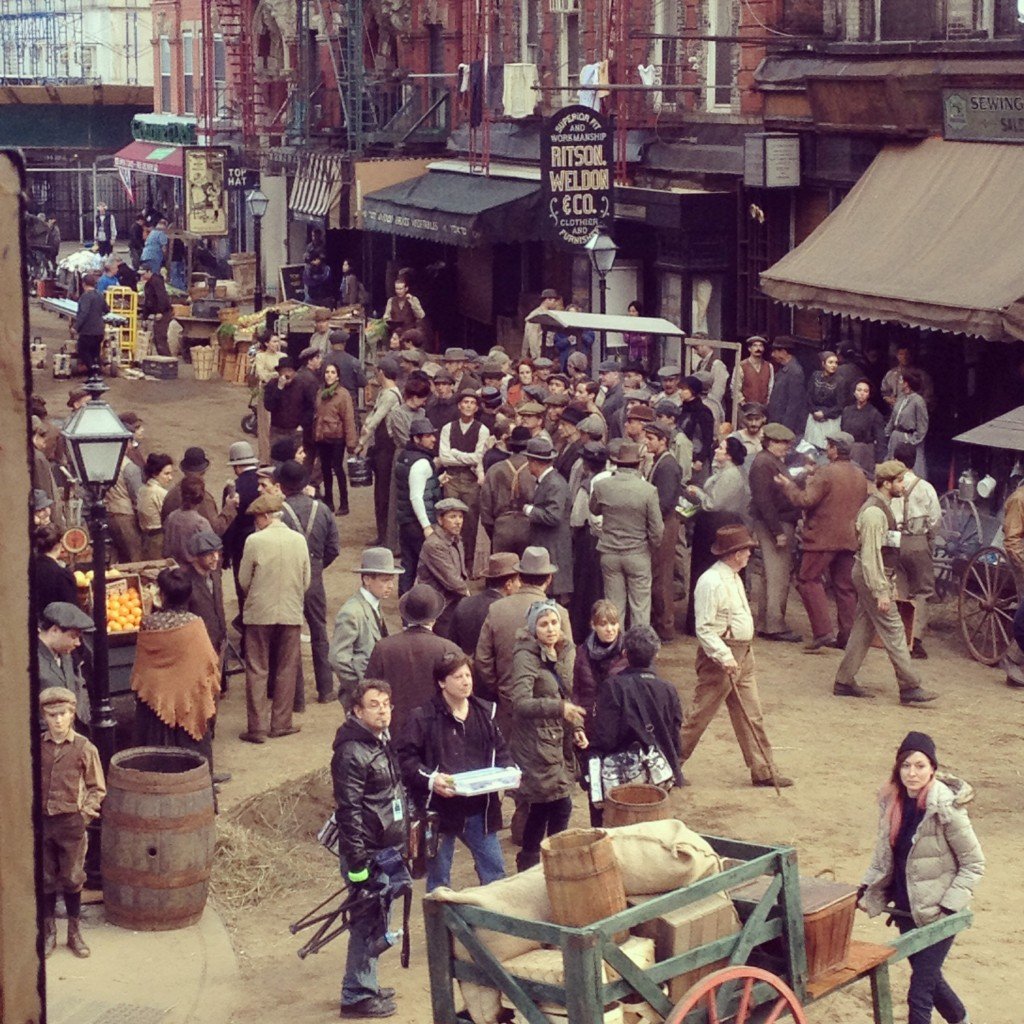Blog Archive
The Yiddish Theatre District
February 25, 2014
A Standing Ovation for The Jewish Rialto
These days, film and television shoots are a common occurrence on the Lower East Side (the Tenement Museum offices were given quite a makeover this fall to shoot The Knick), but the lights of Broadway have always felt like another world compared to the neighborhood.
But did you know that one of the world’s most thriving theatre districts used to be right outside the door of 97 Orchard Street, and one of its actors lived inside?
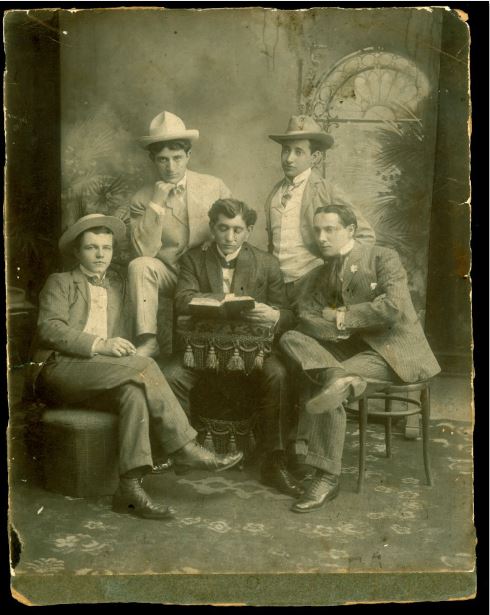
Jacob Burinescu, a resident of 97 Orchard Street, and members of his acting troupe in the early 20th century. Lower East Side Tenement Museum Photographic Collection.
In the early 20th century, the Lower East Side and neighboring areas made up the Yiddish Theatre District, the center of the Jewish theatre scene. The area hosted countless traditional Jewish plays, Shakespearean performances, vaudevillian acts, comedies, original plays, musicals, operettas, and burlesque shows, just to name a few!
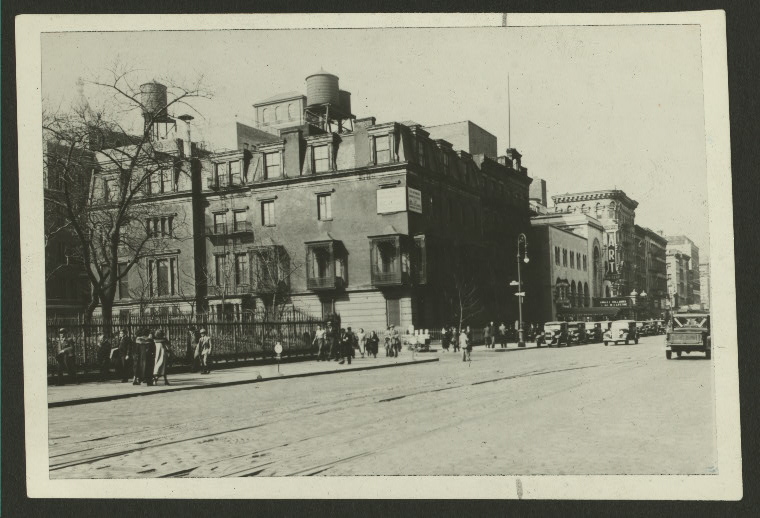
A Yiddish Theatre on East 12th and 2nd Avenue, date unknown. Second Avenue, the center of the Yiddish theatre scene, was nicknamed the Jewish Rialto. Photo courtesy of the New York Public Library.
Yiddish Theater Takes Off in New York
Begun in Romania in the 1870’s, Yiddish theatre in New York City got its start in 1882. It all began when then 13 year old Ukrainian immigrant Boris Thomashefsky convinced his saloon owner friend to rent a hall on 4th Street and put on a Yiddish play. Two accounts of the play exist – one suggests that the play was a total disaster, and the other, from Thomashefsky’s memoir, says that it was a smashing success, despite attempted sabotage from the Germans in the area. At the time, Yiddish theatre was not well received by the mostly German speaking population in the neighborhood, who considered Yiddish undignified. Yiddish theatre grew and grew in popularity and in 1904, Russian-born star, Jacob Pavlovitch Adler, built the first theatre specifically for Yiddish productions, the Grand Theatre. By the First World War, the Jewish Rialto was one of the busiest theatre districts in the world, with its theatres (11 in 1927) showing 20 to 30 plays a night!
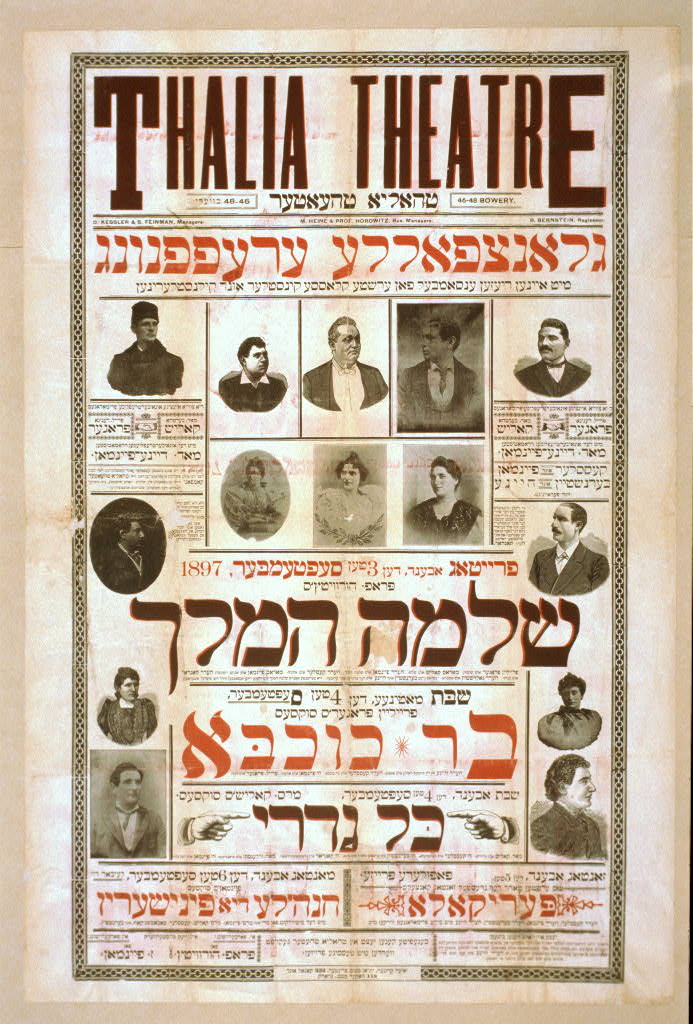
An 1897 poster for the Thalia Theatre at 46 Bowery (now a seafood restaurant). Photo courtesy of the Library of Congress.
Yiddish Theater in the Tenements
Famous alumni of the Yiddish Theatre District include composers/songwriters George and Ira Gerswin; but the actor that hits closer to home for the Tenement Museum is Jacob Burinescu.
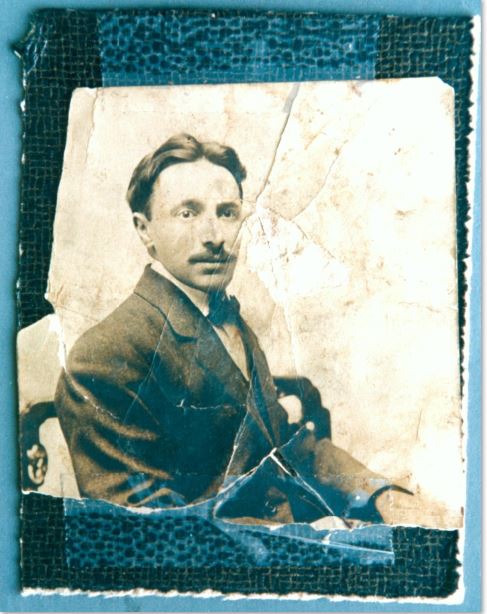
Former resident and actor Jacob Burinescu in the early 20th century. Lower East Side Tenement Museum Photographic Collection.
Jacob Burinescu lived at 97 Orchard Street with his wife Sarah (the first female resident of 97 Orchard Street to vote!) and their children. Jacob was a Romanian immigrant who came to the United States with the dream of being an actor. When he wasn’t acting, Jacob ran a cleaning business out of 92 Orchard Street. But acting was never far from Jacob’s life; his cleaning business often cleaned theatre costumes.
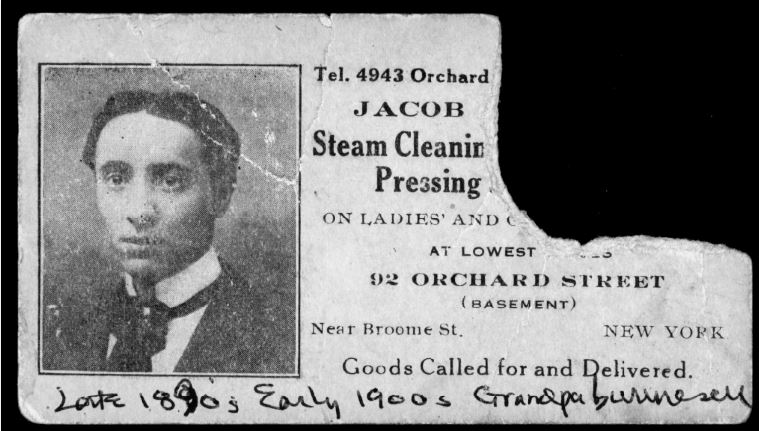
A business card from Jacob Burinescu’s cleaning business at 92 Orchard Street. Lower East Side Tenement Museum Photographic Collection.
In a 2009 interview with Jacqueline Burinescu Ricther, Jacob and Sarah’s daughter, when Jacqueline was asked if her father was an actor, she responded, “He would have liked to be!” She said that he had acted in Romania, but when he moved to the United States and began a family, he needed a steady job to support them. Jacob’s granddaughters, Judy and Marcia, said that Jacob had some kind of problem getting his SAG card, and couldn’t receive benefits that SAG provides actors.
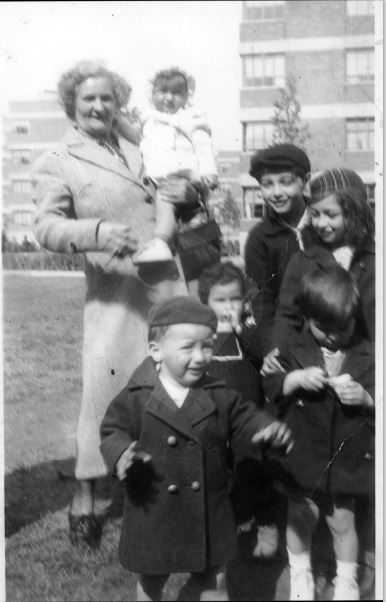
Sarah Burinescu, Jacob’s wife, with her grandchildren in 1939. Sarah was an active socialist and suffragette. Lower East Side Tenement Museum Photographic Collection.
While we don’t know specifically what kind of plays or musicals Jacob acted in, judging by these photos of him and his friends, we can assume that they were real wise guys!
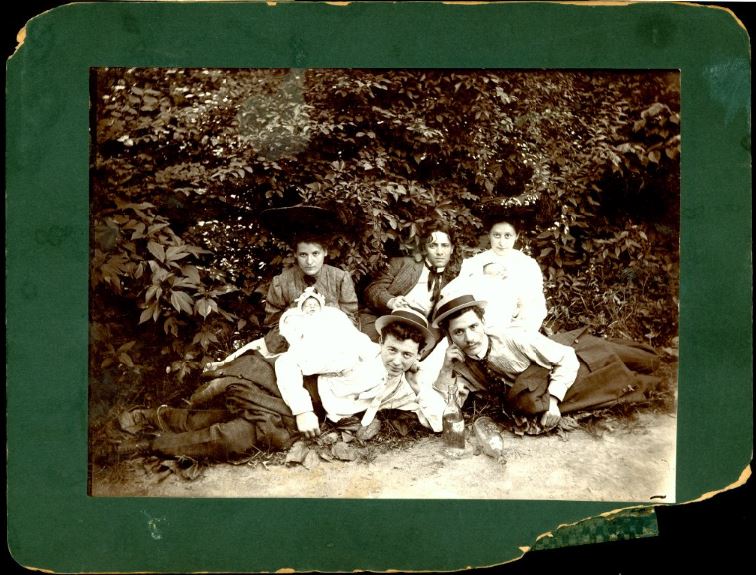
Jacob Burinescu (top center) with his friends in a park, early 20th century. Lower East Side Tenement Museum Photographic Collection.
Jacob’s acting dreams were cut short in 1918, when he died in the Influenza Epidemic that killed millions of people around the world. His granddaughters say that he contracted the flu while he was nursing some of his actor friends who were ill.
The State of Yiddish Theatre Today
After World War Two, the Yiddish Theatre District waned – Yiddish speakers were getting older, and their children weren’t as interested in the theatre. Most of the theatres are now closed, but the tradition of Yiddish theatre lives on with the National Yiddish Theatre Folksbiene, in operation since 1915, in New York City.
– Posted by Lib Tietjen
